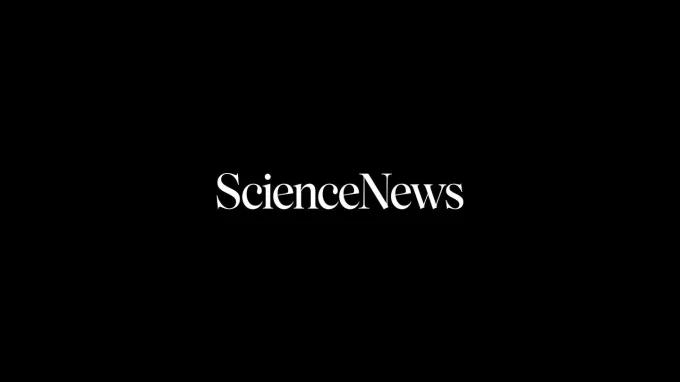Science News Magazine: Current Issue
Vol. 180 No. #8
Trustworthy journalism comes at a price.
Scientists and journalists share a core belief in questioning, observing and verifying to reach the truth. Science News reports on crucial research and discovery across science disciplines. We need your financial support to make it happen – every contribution makes a difference.
More Stories from the October 8, 2011 issue
-
 Climate
ClimateEl Niños may inflame civil unrest
Weather extremes associated with this climate phenomenon appear to double the risk that conflict will erupt in any given year.
By Janet Raloff -
 Humans
HumansBeneficial liaisons
DNA gift from our extinct cousins not only lives on in people today, but helps people today live on.
-
 Humans
HumansWillpower endures
A person's ability to resist temptation stays constant throughout life, study suggests.
-
 Life
LifeBelly bacteria boss the brain
One type of gut microbe sends antianxiety messages through the vagus nerve, changing the behavior of mice.
-
 Tech
TechMining electronic records yields connections between diseases
Mining patient records, combined with molecular research, may reveal new links among medical conditions.
-
 Health & Medicine
Health & MedicineSaffron takes on cancer
The yellow spice inhibits liver cancer growth, tests in rats show.
By Nathan Seppa -
 Humans
HumansOldest hand axes found
Homo erectus may have made both advanced and simple tools 1.76 million years ago.
By Bruce Bower -
 Life
LifeWoolly rhinos came down from the cold
Ice Age icons were already adapted to harsh climate, new fossils suggest.
By Susan Milius -
 Physics
PhysicsA lighter Higgs, but chase continues
Target narrows after LHC experiments suggest a new lower estimated mass for the elusive particle.
By Devin Powell -
 Paleontology
PaleontologyAcidifying oceans helped fuel mass extinction
The great die-off 250 million years ago could trace in part to hostile water conditions, a modeling study suggests.
-
 Health & Medicine
Health & MedicineBrain stents pose risks
Devices to prop open narrowed vessels appear to raise the risk of death or stroke compared with medicines alone, a study finds.
By Nathan Seppa -
 Earth
EarthEarthly riches heaven sent
A period of heavy meteorite bombardment after Earth's formation may have peppered Earth's outer layers with useful metals.
By Devin Powell -
 Space
SpaceSuper-Earths may come in two flavors
As more exoplanets are discovered, evidence emerges that worlds can be either fluffy or dense.
By Nadia Drake -
 Humans
HumansHumans
Footprinting crime scenes, wine refueling stations for King Tut and more in this week’s news.
By Science News -
 Life
LifeDinosaur-era feathers sealed in amber
The richest collection yet of primordial plumage preserves pigment and fine details found modern birds.
By Susan Milius -

SN Online
ENVIRONMENT Plastics sloughed off clothing can pollute coastlines. See “Synthetic lint ends up in oceans.” G.D. Rak et al/PLoS Biology 2011 Arctic sea ice this year was near its smallest extent on record. Read “Summer Arctic melt among worst ever.” GENES & CELLS Natural killer cells are caught in the act of feeding poison pills […]
By Science News -

Science Past from the issue of October 7, 1961
CHEAPER WATER FROM SEA — Lower cost conversion of undrinkable sea or brackish water to potable fresh water will come closer to practicality through use of $75,000,000 appropriated by Congress for the next six years. Lowest cost achieved so far is one dollar per thousand gallons compared with the cost from ordinary sources of 30¢ […]
By Science News -

Ancient Rome forbade downtown traffic in day
Roman road congestion is as enduring as the Eternal City.
By Science News -

Brain Bugs: How the Brain’s Flaws Shape Our Lives by Dean Buonomano
A neuroscientist gives an entertaining look into the brain’s hardware and software flaws and how they affect everyday life. W.W. Norton & Co., 2011, 310 p., $25.95
By Science News -

The Exquisite Butterfly Companion: The Science and Beauty of 100 Butterflies by Hazel Davies
This guide to 100 butterfly and moth species comes with a set of butterfly-shaped illustrations to use in craft projects. Sterling Signature, 2011, 88 p., $14.95
By Science News -

Cosmos Close-up by Giles Sparrow
A collection of astronomical images taken by telescopes and spacecraft of all kinds gives brief explanations of the science behind each highlighted object. Firefly Books, 2011, 320 p., $29.95
By Science News -

The Sibling Effect: What the Bonds Among Brothers and Sisters Reveal About Us by Jeffrey Kluger
A review of recent research shows how siblings affect each other, covering topics such as birth order, blended families and parents who play favorites. Riverhead Books, 2011, 320 p., $26.95
By Science News -

BOOK REVIEW: Rambunctious Garden: Saving Nature in a Post-Wild World by Emma Marris
Review by Janet Raloff.
By Science News -

BOOK REVIEW: Epigenetics: The Ultimate Mystery of Inheritance by Richard C. Francis
Review by Tina Hesman Saey.
By Science News -

-
 Planetary Science
Planetary ScienceFertile Frontiers
Alien-life hunters focus on moons in outer solar system
By Nadia Drake -

-

Letters
Lowdown on Earth’s heat “Science Stats” (SN: 8/27/11, p. 4) understates the power Earth radiates into space and mistakenly suggests that Earth radiates more energy from internal sources than it receives from the sun. The total (44 trillion watts) shown in your diagram must represent only the minuscule percentage (about 0.02 percent) from internal energy […]
By Science News -

Science Future for October 8, 2011
October 16Comet Elenin comes its closest to Earth and may be visible with binoculars. See NASA’s FAQ at 1.usa.gov/oeX6hP October 31Deadline for middle schoolers to enter the Future City engineering competition. Learn more at www.futurecity.org October 18Get hands-on at the American Museum of Natural History’s Family Party in New York City. See amnh.org/familyparty
By Science News -

The Beginning of Infinity: Explanations That Transform the World by David Deutsch
A physicist explores the elaborate relationship between science and other realms of human endeavor, with a focus on physical, biological and social phenomena. Viking, 2011, 487 p., $30
By Science News
